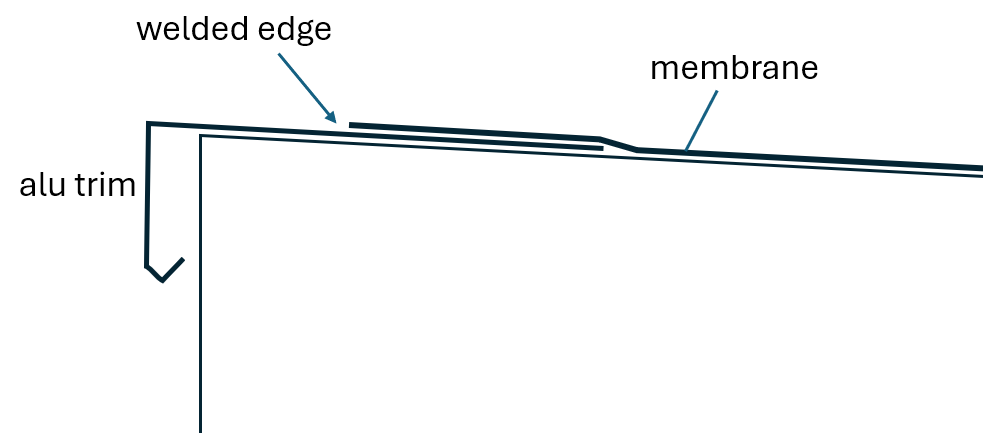-
Posts
7294 -
Joined
-
Last visited
-
Days Won
38
jack last won the day on July 1
jack had the most liked content!
Personal Information
-
About Me
Considering a move to Octopus Energy and want to help BuildHub while getting a £50 credit for yourself? Please click here:
https://forum.buildhub.org.uk/topic/36891-considering-a-move-to-octopus-energy-and-want-to-split-a-%C2%A3100-bonus-with-buildhub -
Location
SE England
Recent Profile Visitors
The recent visitors block is disabled and is not being shown to other users.
jack's Achievements

Advanced Member (5/5)
2.4k
Reputation
-
Unless the original poster is monitoring this thread, they won't see your reply. To flag someone, you can type the @ sign, start typing the member's name (no space after the @), then select from the drop-down menu: @frankmcs65
-
Welcome. For "Utility connection – specifically Drainage/Waste water", we don't have a sub-forum for the utility connection side of waste water, so please post in https://forum.buildhub.org.uk/forum/130-waste-sewerage/
-
.jpg.c21f3ac78c9b7efd90cbdcb312744dc5.thumb.jpg.7adcad4c0e384f5ecd7d56b0618df6e5.jpg)
Samsung/Gen6 plumbed boiler (ASHP)
jack replied to Paul16461's topic in Air Source Heat Pumps (ASHP)
I can't help with your question, but I've moved it to the ASHP sub-forum and mentioned that it's an ASHP in the title (I would generally assume a "boiler" is gas or oil fired). -
The massive crack circled in yellow would have me concerned: Even with a drip edge along the underside of the coping stones, there's a discontinuity at each join that could let water track away from the edge. The one at the yellow arrow seems particularly bad. Could you temporarily cover the render on your neighbour's side with some plastic sheet that goes right up under the coping stone overhang, ideally with a continuous bead of silicone to make sure water can't track through? That might let you at least rule out the neighbour's render.
-
.jpg.c21f3ac78c9b7efd90cbdcb312744dc5.thumb.jpg.7adcad4c0e384f5ecd7d56b0618df6e5.jpg)
Cheap sturdy vacuum cleaner for DIY cleanup
jack replied to Gill's topic in General Self Build & DIY Discussion
I'm not surprised. The one we snaffled over 10 years ago had already had a long history of being hired out to builders, who you can be sure didn't treat it with any respect. -
.jpg.c21f3ac78c9b7efd90cbdcb312744dc5.thumb.jpg.7adcad4c0e384f5ecd7d56b0618df6e5.jpg)
Cheap sturdy vacuum cleaner for DIY cleanup
jack replied to Gill's topic in General Self Build & DIY Discussion
Almost EXACTLY my experience. Wife used new Dyson to vacuum up a tiny amount of concrete dust, it developed a loud squeal, and was never the same again, even after sending it in for a service to address the issue. My inlaws run a plant hire company and hire out Henrys. They last forever. After our experience with the Dyson, we got hold of an ex-hire Henry. It vacuumed up everything we threw at it during the build, including concrete and plaster dust, and is still going strong a decade later. One of the guys onsite during our build had one. Chatting away to him about their reliability, and we learn that he's been running his without a bag, for years, because he didn't know it needed one! -
A reinforcing band is usually laid along joints to reinforce them before resin is applied, which can result in a visible line (you can certainly see the joints in the fiberglass on our balconies, but that's probably because I did them!) Crackling noises suggest a lack of adhesion, which could be down to insufficient resin, or the resin they did use not being rolled out enough to ensure full wetting of the glass through to the substrate. However, even if you don't have full adhesion, as long as the resin is continuous, it shouldn't leak. Do you know where the leak is? Are there any obvious pinholes? What about the copings over the parapet walls? We had a leak through a section of aluminium coping over our parapet wall that was not at all obvious due to how far the water tracked before becoming visible. More info needed, but @SteamyTea might have some thoughts.
-
Welcome. I'm certainly no specialist, but I'd start with the fact that the coping stones don't appear to have any sort of drip edge on them. If so, water will track underneath them to where they join the render. Any cracks/gaps at that joint will let in water. Re "Coping stones have dpc underneath them (protection from water ingress if coping stones were failing)", what does the DPC actually cover? If it's just the top of the wall under the coping stones, the water behind the render will find its way to the brick wall once it gets lower than the bottom of the DPC. Before rendering, the brickwork looked very "gappy". Any water getting though to the brickwork could take any number of paths downwards, including from one side of the wall to the other (e.g., it's possible water getting on on your neighbour's side could track to your side through a gap in the mortar). I'm sure someone more knowledgeable will be along shortly, but having dealt with a serious roof leak in the past, you have my sympathy!
-
I'm 100% certain I'd have done a much better job than the installer we used, even with zero training and experience. Most of it is It just common sense and a desire to do a good job. Unfortunately, the guy who did 95% of the work was a waste of space. 100% my opinion too.
-
I assume it's because the installer was incompetent. Unfortunately, I didn't realise how bad a job they were doing until it was too late. I've previously documented some of the issues we had with them, particularly the multiple serious leaks we had within a month of moving in. This was the worst leak: And the extent of the damage arising out of that particular leak: There were plenty of other problems along the way: This is just a small subset. I got them back a couple of times to fix the worst of the issues, but it's still a dog's breakfast. We were so worried about the installation that we demanded the Resitrix rep come out and inspect it, particularly in the areas that ended up being the source of the leaks a few months later. Disappointingly, the rep wrote a report saying that all work was of the "usual high standard" (or words to that effect) expected of their authorised installers. It's a shame, because the Resitrix product itself is clearly very high quality.
-
I don't like the idea of welding a membrane onto a trim where the slope is away from the trim towards the membrane. We have a Resitrix membrane and I've been really unhappy with how it was done. The detail over the outside edge of our parapet wall looks like this: It's theoretically fine as long as the welds (they're modified bitumen based) hold. The problem is that the trims are aluminium, so there are joins at least every 3 metres. As the trims expand and contract with temperature, the welds near the joints are put under quite a bit of lateral stress. In our case, many of them have failed for a couple of inches either side of the joins. I don't doubt that water getting into the space and freezing makes it worse over time. Also, water tends to pool along the welded edge due to the direction of the slope, making it very easy for water to get into the failed joins. It would've mattered a lot less of the weld had failed but the slope were in the other direction. In summary, if I'd known then what I know now, there's no way I would have accepted this design. Assume that welds, joins, glue, etc. will always fail over time. The design needs to be such that, if that happens, water is still largely shed in the correct direction without having a route into the structure through the failed join.
-
Feels like the majority of discussions around finance on Grand Designs. I remember that one on the Isle of Wight where they built an absolutely massive house with half basement and high quality finishes. They budgeted less than £1000/sqm, with them doing literally no actual building themselves. By the time the windows arrived from Switzerland, they were already out of money. The guy was running around trying to scrape together enough cash to allow the windows to be unloaded. Apparently they built that big because the plot deserved it.
-
A mate of mine got some guys in to clear the moss off his roof. Turns out it's in really bad condition - felt is leaking in several areas, battens are in poor condition, and various other issues. Some of the rafters are wet but there's no rot yet. It needs to be taken off and redone. It's a medium-sized four bed semi with a simple double-pitched gable roof. I won't tell you the price the guys doing the moss quoted him, but any thoughts on a rough cost for this sort of work (basically remove and replace everything from the rafters up)? Tiles are clay if that helps. Thanks.
-
.jpg.c21f3ac78c9b7efd90cbdcb312744dc5.thumb.jpg.7adcad4c0e384f5ecd7d56b0618df6e5.jpg)
Self build
jack replied to steady's topic in Self Build VAT, Community Infrastructure Levy (CIL), S106 & Tax
Unless your business is building your house, you need to keep it completely separate from your build. -
.jpg.c21f3ac78c9b7efd90cbdcb312744dc5.thumb.jpg.7adcad4c0e384f5ecd7d56b0618df6e5.jpg)
Self build
jack replied to steady's topic in Self Build VAT, Community Infrastructure Levy (CIL), S106 & Tax
As a self-builder, you don't reclaim VAT in the same way a business would. Instead, you claim back on materials, generally after the build is complete: https://www.gov.uk/vat-building-new-home Any invoice including labour should be zero-rated by the invoice issuer. If you're accidentally or wrongly charged VAT by, e.g., a plumber, you won't be able to claim it back through the scheme above, so it's worth getting it right as you go along. Worth reading up on it all, as it's slightly complex, and you could miss out on a lot of money if you get it wrong! Start with the VAT reclaim sub-forum (next level down from the one you've posted this in). The pinned post has an overview, but please note that the early part of the first post (about claim guidelines) might be out of date. The general consensus is that HMRC updated its internal guidance a couple of years ago, because suddenly HMRC's rejections for being too late suddenly dried up. If you can't see that forum, post another couple of times, as it might have a minimum post count (maybe 20 posts?) before you can see it.








